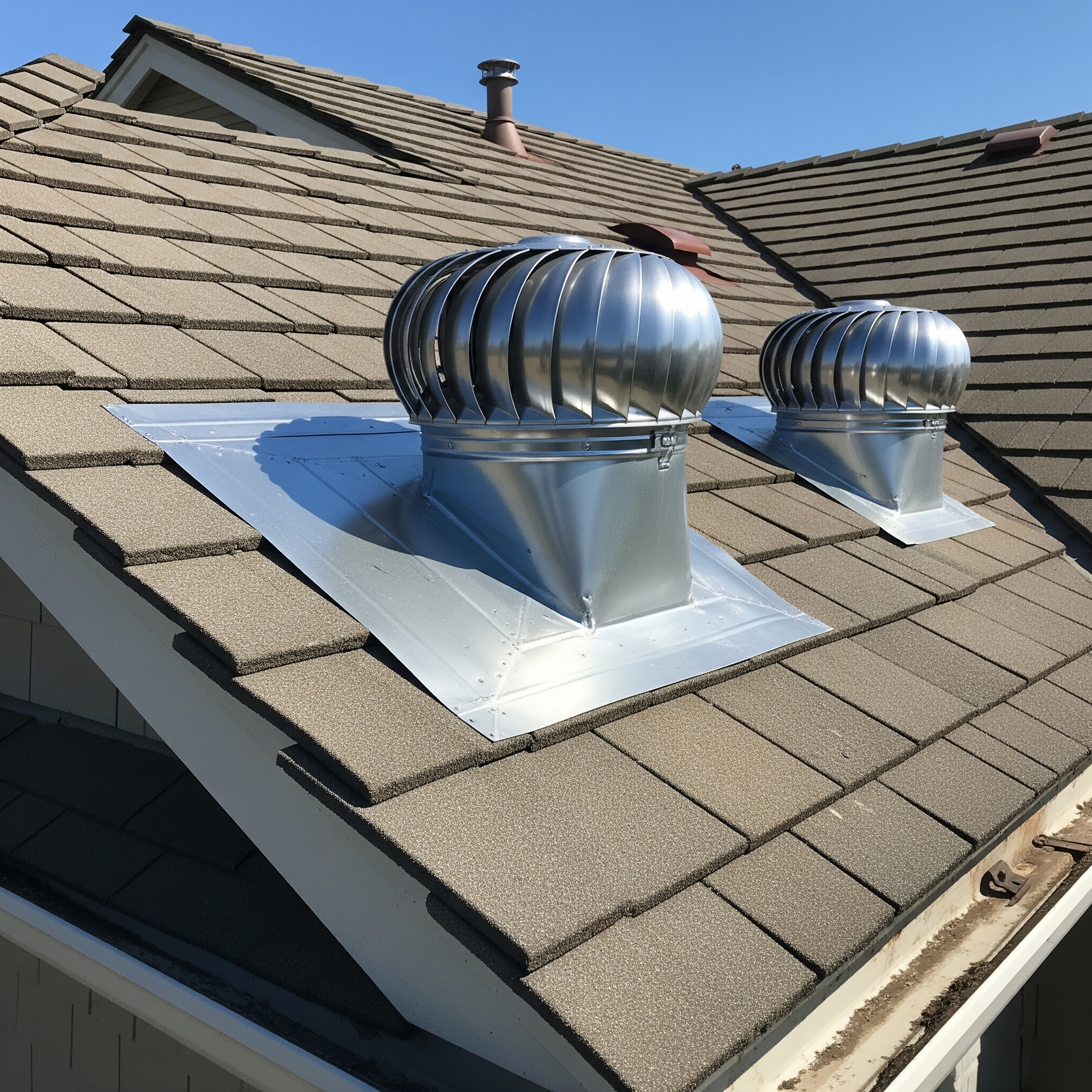When homeowners think about their roofs, ventilation might not be the first thing that comes to mind. However, roof ventilation is a critical part of your home’s structure, affecting everything from energy efficiency to roof lifespan. At AMERICAN ROOFING PROS New Jersey, we regularly educate customers on how proper roof ventilation can make a significant difference in home performance and comfort.
If you’re considering a new roof or wondering if your current system is performing optimally, understanding the benefits and importance of proper roof ventilation is key.
📞 Need help with your roof? Call AMERICAN ROOFING PROS NJ at (877) 228-1042 or Get a free quote now.
What Is Roof Ventilation?
Roof ventilation is the process of allowing air to circulate through the attic space via intake and exhaust vents. These vents are typically installed at the soffits (intake) and ridge or gables (exhaust). The main goal of a ventilation system is to regulate airflow, remove excess heat and moisture, and balance the indoor climate in your attic.
A well-ventilated roof system works year-round, not just during the hot summer months. Whether it’s freezing or sweltering outside, proper attic airflow helps reduce strain on your HVAC system and protects the integrity of your roof.
Why Roof Ventilation Is Important
Let’s take a closer look at why roof ventilation is not just beneficial but essential:
1. Prevents Moisture Buildup and Mold Growth
During winter, warm air from your home rises into the attic. If your attic isn’t properly ventilated, this warm, moist air can condense on the underside of the roof. Over time, moisture buildup can lead to mold and mildew, which not only damage roofing materials but also pose serious health risks.
2. Extends Roof Lifespan
Without adequate airflow, excessive heat and moisture can cause shingles, underlayment, and structural supports to deteriorate faster. This can significantly shorten your roof’s lifespan, resulting in costly repairs or premature replacement.
3. Improves Energy Efficiency
A poorly ventilated attic traps heat during summer. This heat radiates down into your living space, forcing your air conditioning system to work harder. Proper attic ventilation allows hot air to escape, reducing cooling costs and making your home more energy-efficient.
4. Reduces Ice Dam Formation in Winter
In colder climates like New Jersey, ice dams form when snow on the roof melts, then refreezes at the edge. Poor ventilation contributes to this process by allowing the attic to overheat. By keeping attic temperatures closer to the outside temperature, proper ventilation helps prevent ice dams and the water damage they can cause.
5. Protects Insulation
Moisture in an unventilated attic can seep into your insulation, reducing its effectiveness and leading to higher energy bills. Keeping the attic dry through ventilation helps maintain insulation performance and indoor comfort.
Signs of Poor Roof Ventilation
Not sure if your roof is adequately ventilated? Here are some warning signs to look out for:
-
Hot or stuffy attic
-
Condensation or frost inside the attic
-
Ice dams on the edge of your roof
-
High energy bills (especially in summer)
-
Mold or mildew in the attic
-
Peeling paint or warped shingles
If you’ve noticed any of these signs, it might be time for a ventilation inspection. AMERICAN ROOFING PROS NJ offers expert evaluations to assess your current setup and recommend improvements.
📞 Call now for an attic inspection at (877) 228-1042 or Get your quote online.
Different Types of Roof Ventilation Systems
Roof ventilation systems fall into two main categories: passive and active.
Passive Ventilation:
These systems rely on natural airflow and temperature differences.
-
Ridge vents: Installed along the roof peak, allowing hot air to escape.
-
Soffit vents: Placed under the eaves, bringing cool air into the attic.
-
Gable vents: Located on the gable ends of the house for cross-ventilation.
Active Ventilation:
These systems use mechanical assistance to move air.
-
Turbine vents: Wind-powered fans that help pull hot air out.
-
Powered attic ventilators: Electric fans that exhaust air from the attic.
-
Solar-powered vents: Eco-friendly versions of powered ventilators.
The best system for your home depends on your roof’s design, attic size, and local climate. At AMERICAN ROOFING PROS, we help homeowners choose and install the right combination of vents for maximum efficiency.
How Much Ventilation Do You Need?
According to building code guidelines, the general rule of thumb is 1 square foot of ventilation per 150 square feet of attic floor space, split evenly between intake and exhaust. However, this can vary depending on insulation levels, attic design, and roofing materials.
A professional contractor can calculate your home’s specific ventilation needs and recommend the most effective layout.
Why Choose AMERICAN ROOFING PROS NJ?
As a trusted name in New Jersey roofing, we don’t just install shingles — we build entire roofing systems designed to last. Our team ensures your roof has the right ventilation, insulation, and structural integrity to withstand the elements.
When you choose AMERICAN ROOFING PROS, you’re getting:
-
Licensed and insured professionals
-
Transparent pricing and FREE estimates
-
High-quality materials and craftsmanship
-
Warranty-backed installations
-
Honest guidance on ventilation, insulation, and energy efficiency
Final Thoughts
Your roof does more than keep you dry — it helps regulate your entire home’s environment. Investing in proper roof ventilation is one of the smartest decisions you can make to increase comfort, reduce energy costs, and protect your investment.
If you’re in New Jersey and suspect ventilation issues or are planning a roof replacement, trust the experts at AMERICAN ROOFING PROS to guide you through it.
📞 Call today at (877) 228-1042
💬 Request your free quote online now
